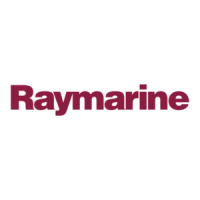Chapter 3: Standard Radar Operations 3-1
Introduction
Chapter 3: Standard Radar Operations
3.1 Introduction
This chapter provides detailed instructions for the standard radar operations of
your SL72 and SL72RC PLUS system. Additional functions, that are
available on integrated systems with appropriate data sources, are described in
Chapter 4. If you have a combined radar/chart display refer to Chapter 5 and
Chapter 6 for information on charting operations.
You can use this chapter with the radar display set to simulator mode, or on the
water after you have installed and set up your SL72 or SL72RC PLUS system.
This chapter covers the following topics:
• Range control.
• Interpreting and adjusting the radar picture, including adjusting the gain,
sea clutter and rain clutter, changing the targets display, and tuning the
radar.
• Measuring range (distances) and bearings using Variable Range Markers
(VRMs) and Electronic Bearing Lines (EBLs).
• Setting up guard zones and handling alarms.
Note: Until you are familiar with interpreting the radar display, you should
take every opportunity to compare the radar’s display patterns with visual
targets, such as other vessels, buoys and coastal structures. You should prac-
tice harbour and coastal navigation during daylight and in clear weather con-
ditions.
If you have a combined radar/chartplotter, or a system with any chart display
connected via SeaTalk, you can identify objects using the cursor echo feature:
With cursor echo on (see Section 4.5 and Chapter 7) you can select an object
on the radar display, the cursor is repeated on the chart display so you can
check the object’s identity.

